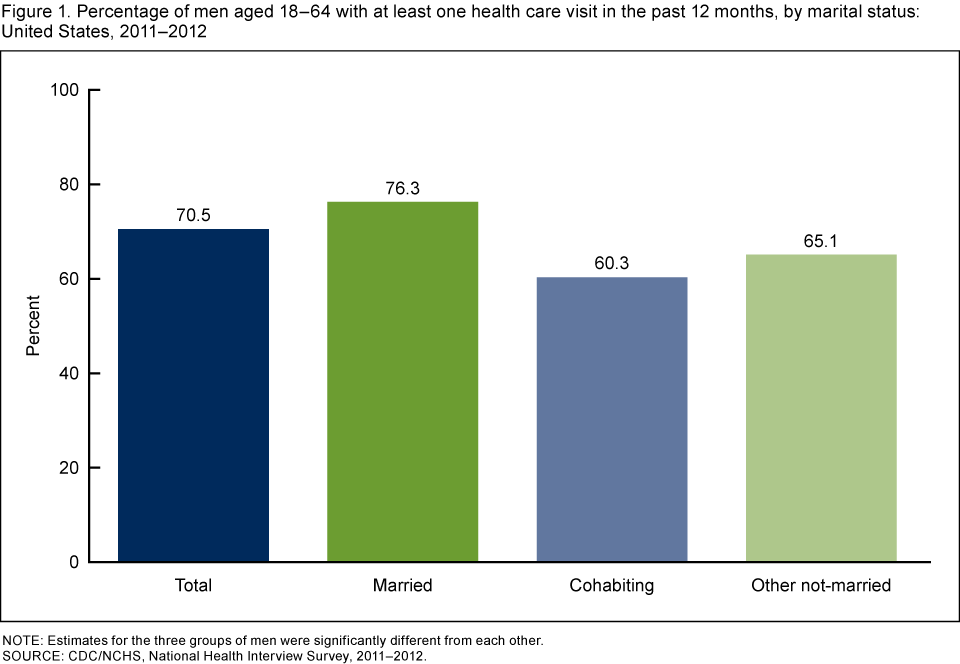Marriage, Cohabitation, and Men’s Use of Preventive Health Care Services
Posted on by In honor of National Men’s Health Week and Father’s Day, NCHS has released a new report that looks at preventive health care service use among groups of men aged 18-64: married men, cohabitating men and other not-married men. The consistency of observed differences by age and health insurance coverage status were also investigated.
In honor of National Men’s Health Week and Father’s Day, NCHS has released a new report that looks at preventive health care service use among groups of men aged 18-64: married men, cohabitating men and other not-married men. The consistency of observed differences by age and health insurance coverage status were also investigated.
Previous research has demonstrated that married men are more likely than not-married men to seek preventive health care services because their spouses encourage them to do so. It was not known, however, whether cohabiting partners of not-married men play a health-promoting role similar to that of spouses.
There is also a Father’s Day connection since two of the authors of the report are related. Joe Blumberg is Stephen Blumberg’s father and they came up with the idea for this research project while discussing men’s health after family dinners in the winter. The report was further refined with the assistance of Dr. Anjel Vahratian.
Key Findings from the Report:
- Among men aged 18–64, those who were married were more likely than cohabiting men and other not-married men to have had a health care visit in the past 12 months.
- Marriage was associated with greater likelihood of a health care visit for both younger and older men, and for men with health insurance.
- Among those for whom blood pressure, cholesterol, and diabetes screenings are recommended by the U.S. Preventive Services Task Force, married men were more likely than cohabiting men to have received these clinical preventive services in the past 12 months.
- Cohabiting men were less likely than other not-married men to have had a health care visit, cholesterol check, or diabetes screening.
Posted on by


